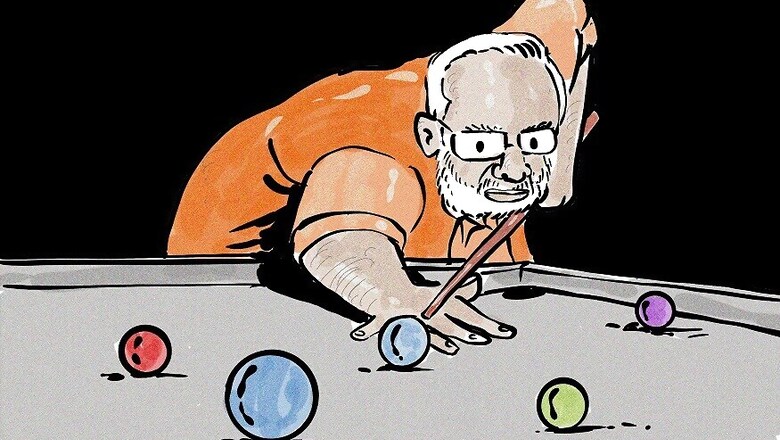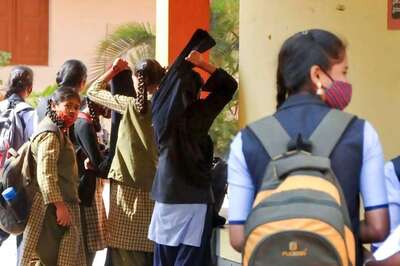
views
For the first three decades since Independence, Congress sought to nominate a leader belonging to either Brahmin or Bania community as the chief minister of Uttar Pradesh. Although Indira Gandhi remained on very good terms with the erstwhile chiefs of minor principalities, the party worked to stitch up a different social coalition with Brahmins at the top, supported by Dalits and Muslims.
With the passage of time, alternate social combinations coalesced to challenge Congress’s hegemony. Charan Singh broke away to become the chief minister with support from socialists and Jan Sangh in 1967. Ram Manohar Lohia mobilised other agrarian communities, which are now called Other Backward Castes in political parlance. They sought a share in the power structure.
To combat assertive intermediary agrarian communities, Congress in 1980 nominated VP Singh as the chief minister of UP. Though heads of erstwhile principalities like Dinesh Singh of Pratapgarh and Dhunni Singh of Amethi helped Indira Gandhi win elections, Congress, after the three-year Janata Party rule, experimented for the first time with Rajput leadership in UP.
As a dominant pole in the Indian polity, the Congress in UP and in other states enjoyed the luxury of experimenting with caste and social permutations and combinations. Some were borne out of political compulsions. Others were taken in deference to the whims and fancies, likes and dislike of the leadership at the helm.
The BJP’s near total domination of the political landscape after 2014 helped the party win elections in many provinces. The party was leading governments in many provinces where it played a second fiddle to a regional ally. For instance, in Mahrashtra and Haryana, it emerged as the single largest party in 2014. In Jharkhand, the party came very close to the halfway mark and formed government under Raghubar Das.
The political domination gave the BJP enough leeway to experiment with leadership. So in Maharashtra it nominated Devendra Fadnavis, a Brahmin, as the CM. In Haryana, Manohar Lal Khattar was the party’s choice for the CM’s post. And in Jharkhand, a tribal state, Raghubar Das was asked to lead the government.
In all three states, the BJP handed over leadership to someone who did not belong to the numerically dominant caste or social group. Later in 2017, we saw the party using the same yardstick in settling leadership issue in UP when it nominated an upper caste Leader in Yogi Adityanath as UP chief minister.
This formula to create alternative power structure has its advantages. For one, a leaders from minor social group is generally more acceptable to dominant communities who vie with one another for a larger share in the political pie. For instance, in Rajasthan, Ashok Gehlot who comes from numerically small OBC community gains in acceptability when dominant Jats and Rajputs compete for political power.
Success or failure of such experiments in social coalitions tends to depend on how accommodative and nimble the leadership is maintaining the balance of power. If not, then local factors and social dynamics tend to engender counter mobilisation.
These countervailing forces seem less effective when national issues tend to influence electoral preferences. As in the general elections in May 2014, most of these states voted overwhelmingly for the BJP.
In provincial elections, however, the faultlines become more tangible. So in Haryana, Jats, the dominant agrarian community struck back to eke out a share in power from the BJP. The party has had to accommodate JJP with deputy CM’s post. Even the opposition space under Bhupinder Singh Hooda has been appropriated by the community.
In Maharashtra again, the Marathas struck back to revive the ‘triple M’ combination with Minorities and Mahars to remove BJP from power. The Shiv Sena may have its CM in the state, but the fulcrum of power would indisputably lie with Sharad Pawar.
In Jharkhand, too, the BJP has experimented with a non-tribal chief minister to give a stable government for five years. But here again, numerically dominant social groups are recalibrating to seek a larger say. All Jharkhand Students Union (AJSU), with its base among the Kurmis in Chota Nagpur plateau, has broken alliance with the BJP. Jharkhand Mukti Morcha is trying to regain its dominance in the tribal region.
It is not surprising thus that BJP willing to be more accommodative to regional aspirations in post poll negotiations for government formation.




















Comments
0 comment